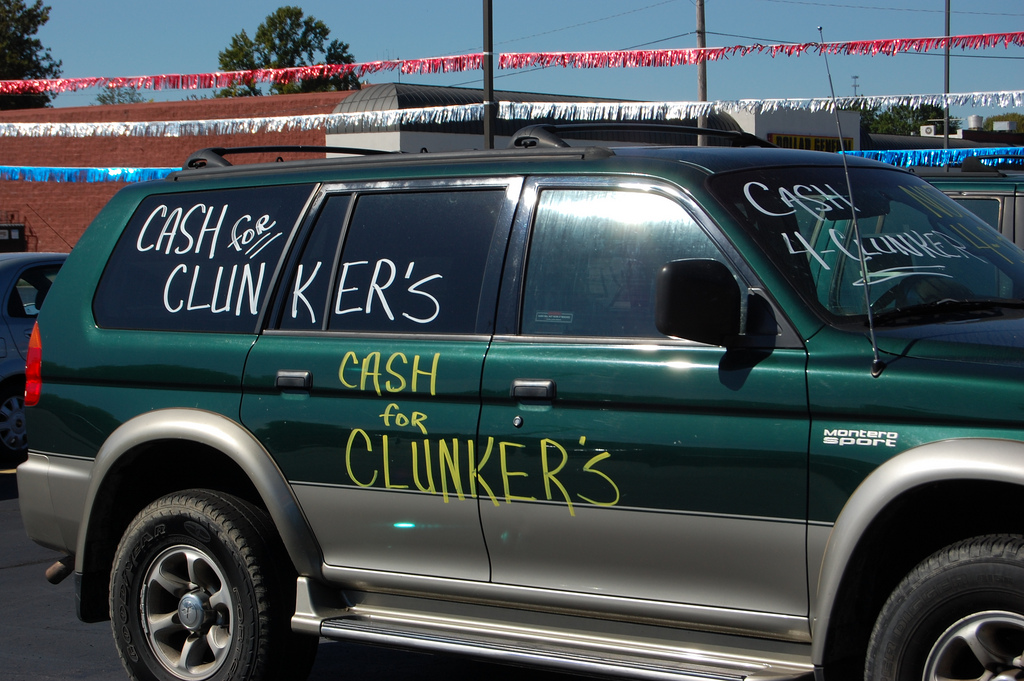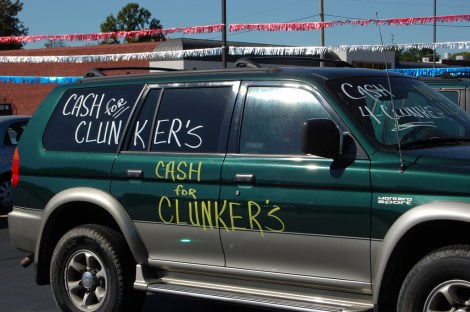Hey, remember back in 2009 when President Obama was saving the American car industry by whatever means necessary, including offering cash incentives for trading in old cars for newer, more efficient ones? And remember how a lot of people used that incentive to buy cars that were only marginally more efficient than their junked clunkers?
Billed as stimulus both for automakers and the environment, the Car Allowance Rebates System, better known as Cash for Clunkers, turned out to be clunker itself. Besides fueling more unsustainable new-car-buying consumerism, the program also destroyed thousands of older, functional vehicles — vehicles that, according to the Automotive Recyclers Association (ARA), were almost 100 percent recyclable. Through Cash for Clunkers, about 690,000 vehicles had their engines destroyed and many were sent to junkyards, bypassing recycling companies altogether.
The ARA issued a report when the CARS program was announced saying that a much more efficient program would have been to encourage recycled parts usage. The National Highway Traffic Safety Administration explained at the time that the engines must be destroyed to prevent the vehicles from being resold and taking the road again. For any dealer that did not follow that law, there was a hefty $15,000 fine per infraction against them.
CARS claims to have had a positive environmental impact by taking these old vehicles off the road, yet it required destroying the traded-in vehicle’s drive train and engine. The engines were destroyed with a sodium silicate solution, also known as liquid glass. The silicate causes the engine’s parts to freeze and ensures it never runs again … Many of the clunkers ended up at auctions where parts dealers bid on them. By the time all reusable parts are salvaged, the material left is the car’s frame. CARS mandated that the clunkers be crushed or shredded within 180 days, regardless of whether all the usable parts were salvaged or not. …
The Department of Transportation reported that Cash for Clunkers was an environmental success. The clunkers averaged 15.8 mpg, compared with the 25.4 mph for new vehicles being purchased, for an average fuel-economy increase of 61%. In general, drivers traded in inefficient SUVs and trucks for more efficient passenger cars. However, it’s quite easy to negate this small difference in gas mileage purely by the fact that people will be more likely to drive a vehicle that takes less money to fill up with gas. It’s an efficiency paradox: as we get more efficient at using energy, the overall cost of energy goes down, but we respond by using more of it.
So, H&M, about that clothes recycling program …




